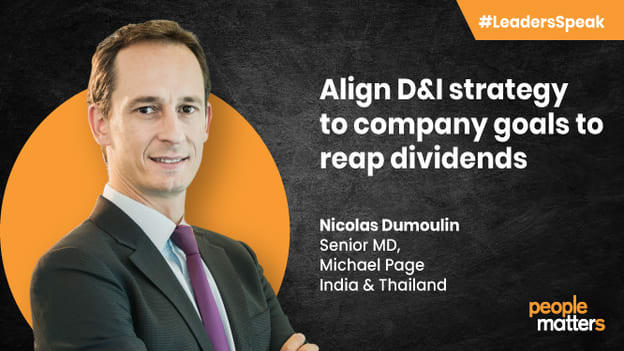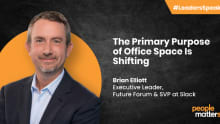Customer first, and employee second? Time to strike a fine balance: Nicolas Dumoulin

Nicolas Dumoulin is a Senior Managing Director (India and Thailand) at Michael Page, a professional recruitment consultancy. He comes with 16 years of experience working in the recruitment industry, having joined Michael Page in 2006 in Belgium.
What are some of the biggest challenges that leaders must prepare for?
I think the biggest challenge that we already see and will continue to see is the people aspect. A lot of people are moving jobs, so the attrition of employees is pretty high. Employee engagement is a big issue and I foresee this to continue, for two reasons.
Talent availability: There are many more opportunities that have opened up, but also a lot of people want to change something in their lives. As a business leader, creating that culture and engagement is becoming really important to have a competitive advantage over your competitors. Attracting the right talent, developing them, and then engaging them for a longer period will definitely be a competitive advantage.
Qualified talent with technology: The other reason is a shift in the type of talent people need. In traditional businesses, it was the same type of people coming in, but now with digitisation and transformation to a more tech-forward, digital way of working, many companies need to rethink about the type of talent they need. Understanding what you really need versus your business strategy or your digital strategy is something that a business leader needs to understand really well.
The overall hiring is pretty complex now, especially in technology. So, it's a bit of a combination of the two... to sum it up, the availability of talent, specifically the transformation towards digital, and finding qualified talent with technology talent, remote working and integrating this in the current structure, scarcity of talent and global companies sourcing India talent are some key aspects for business leaders to navigate going forward.
What do you think are the main reasons corporations are failing to reap the dividends of their diversity and inclusion (D&I) initiatives?
Firstly, because this is not embedded in the strategic strategy the company is trying to achieve. I am a true believer that D&I needs to be connected with the company's strategy. Your D&I strategy must be aligned with your company goals and once that is embedded, then you embed it also in continuous strategy meetings, for more alignment with employees across all levels.
Secondly, it's essential to have a committee in place with leaders... engaging people across different disciplines or different departments, not only the HR Department. HR will play a role but people across the business are the key leaders for each of the strategies or pillars you are trying to drive.
Work with people across the office for the execution. Once you get people in different departments engaged, they see what you are trying to do and how it is aligned with the strategy. Then, the excitement to try these things on the ground is much higher. HR can support, help strategise, and so on but the real task is embedding it in the company for a more aware and a wider reach.
What is critical for well-being programmes being championed to yield outcomes - a compassionate and purpose-aligned work culture?
Understand that people live in different conditions and have different preferences in terms of where and how they want to work. It’s not easy to come up with something that is going to solve the problem for everyone in the office.
What we have observed is that overall, there is more stress in terms of the overall workload because people have been used to working in a certain way for many years. Some people with a career of 20 years would have been working in the pre-Covid era in a certain way or routine for many years. Right now, there is less standardisation or unification. Now this indicates that people need to settle in this new way of working and change comes with stress... people need to get used to it and do away with a routine they have been familiar with for 18 years. In the current context, we are already better there and stress levels have decreased. People have found coping mechanisms/ways that work for them and mean less stress.
Having said that, there is still that difficulty... a thin line between work and private lives, especially in India. Because of the way everyone is always on and always working, and there is no limit when reaching out to people. This is a bit of a cultural aspect, which will still need to evolve and a lot of emphasis for companies to try to change things. More maturity aspects need to come in for the shift to happen.
The challenge is that this is not always easy for businesses, because some are very customer-oriented. When they always try to put the customer first, this sometimes means putting employees secondary, so finding that balance is what is required.
One message for talent leaders to come out stronger on the other side of the pandemic?
One thing to remind yourself is that the pandemic is a temporary phenomenon.
The companies that hired talent last year, are the companies that would excel now. It is very important, especially in a talent landscape when things are a little bit strained you keep on focusing in your hiring process, because these are sometimes the better moments to hire talent in the market.
From a talent development perspective, I think there’s a definite shift to more online training, self-serving aspects which are coming in. Look at how you can change and use the available tools digitally to give better experience to employees. Talent development and training has been at a very high standards, taking out of the box way of doing things resulting in average impacts. That aspect, post pandemic with the available new tools and how can you change the complete framework or the way you approach is something you definitely need to do.






